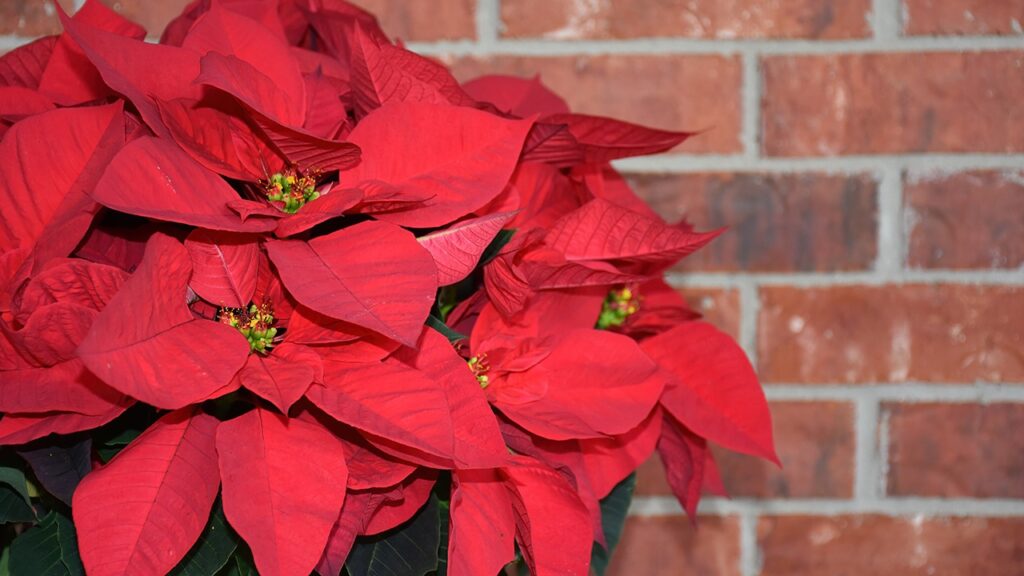
Poinsettias are grown in greenhouses and then shipped off to retailers.
by John Bagnasco
When customers take a plant from a warm store through a cold parking lot to the car, it can start to lose its leaves from the temperature shock. In chilly climates, protect plants with a bag or some paper if it’s going to be outside in the cold for more than a couple of minutes.
Indoor temperatures on the cooler side are optimum at 55°F to 75°F. Keep plants out of cold drafts from doors and windows and away from the heat from vents, radiators, and fireplaces.
Pots without drainage holes can leave poinsettia roots sitting in water, which in turn can cause yellow leaves and leaf-drop, or the roots can rot and the entire plant will die. Make a few holes in your container, or move your plant into a pot that has drainage holes. If you keep your plant in a saucer or a decorative pot sleeve, make sure to pour out any excess water.
Forgetting to water can be as harmful as overwatering. Although they are somewhat succulent, water when the pot feels lightweight, the plant becomes top-heavy, or the soil feels dry to the touch. The soil should stay moist but not soggy most of the time.
There is no need to feed the plants while they are blooming, Poinsettia colors often start to fade by February. If you want to keep a plant for its green leaves, or to coax it to rebloom, wait until May to start fertilizing. Don’t feel guilty if you want to save the hassle and just compost a tired plant after the holidays. even experienced gardeners treat themselves to a fresh poinsettia every year.
